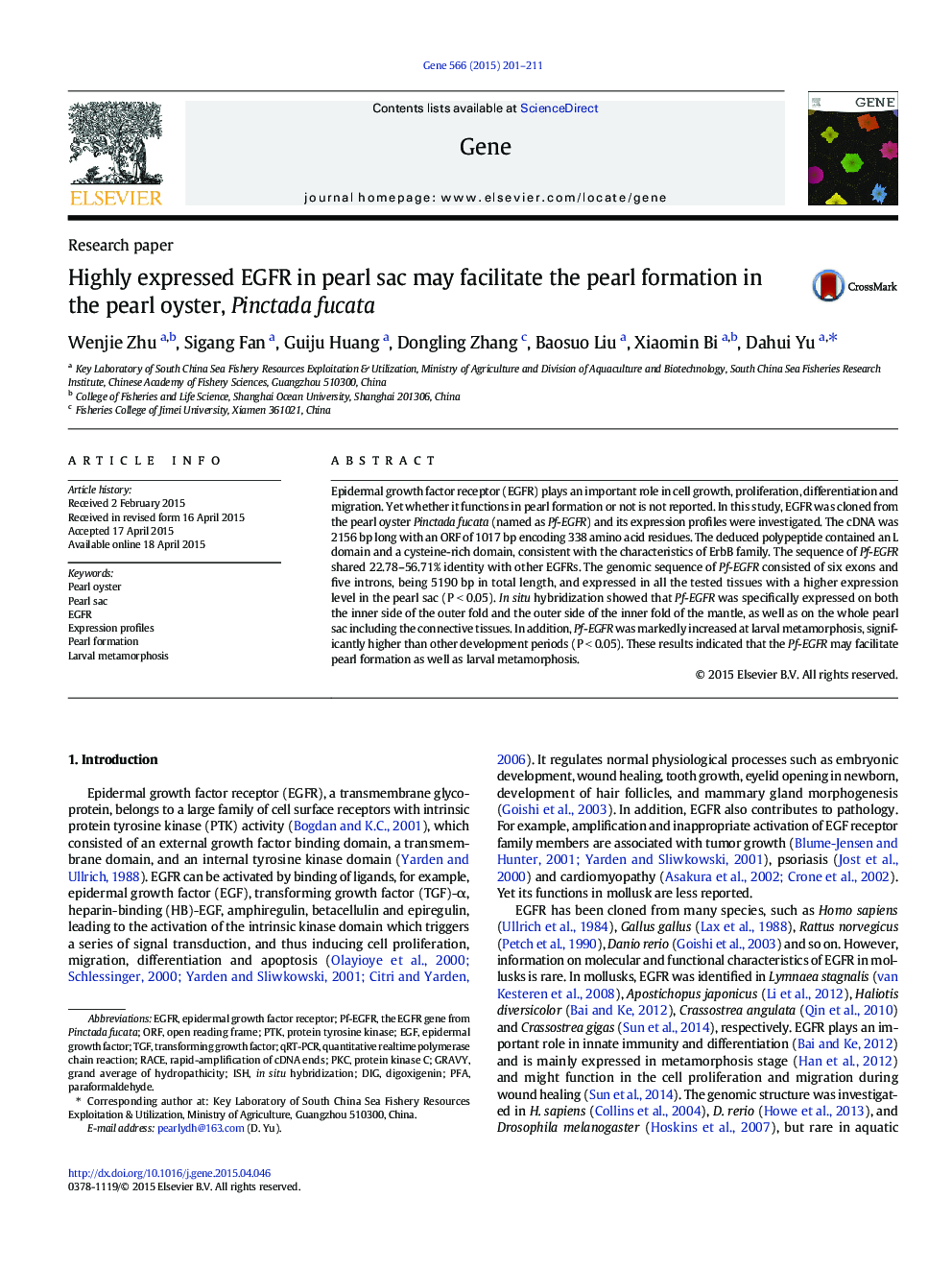| Article ID | Journal | Published Year | Pages | File Type |
|---|---|---|---|---|
| 2815607 | Gene | 2015 | 11 Pages |
•EGFR cDNA and DNA sequences in Pinctada fucata were reported for the first time.•The gene expression was located in the mantle of Pinctada fucata for the first time.•The highly expressed EGFR in pearl sac may facilitate the pearl formation.•The result provides a foundation for further study on the function of the gene.
Epidermal growth factor receptor (EGFR) plays an important role in cell growth, proliferation, differentiation and migration. Yet whether it functions in pearl formation or not is not reported. In this study, EGFR was cloned from the pearl oyster Pinctada fucata (named as Pf-EGFR) and its expression profiles were investigated. The cDNA was 2156 bp long with an ORF of 1017 bp encoding 338 amino acid residues. The deduced polypeptide contained an L domain and a cysteine-rich domain, consistent with the characteristics of ErbB family. The sequence of Pf-EGFR shared 22.78–56.71% identity with other EGFRs. The genomic sequence of Pf-EGFR consisted of six exons and five introns, being 5190 bp in total length, and expressed in all the tested tissues with a higher expression level in the pearl sac (P < 0.05). In situ hybridization showed that Pf-EGFR was specifically expressed on both the inner side of the outer fold and the outer side of the inner fold of the mantle, as well as on the whole pearl sac including the connective tissues. In addition, Pf-EGFR was markedly increased at larval metamorphosis, significantly higher than other development periods (P < 0.05). These results indicated that the Pf-EGFR may facilitate pearl formation as well as larval metamorphosis.
